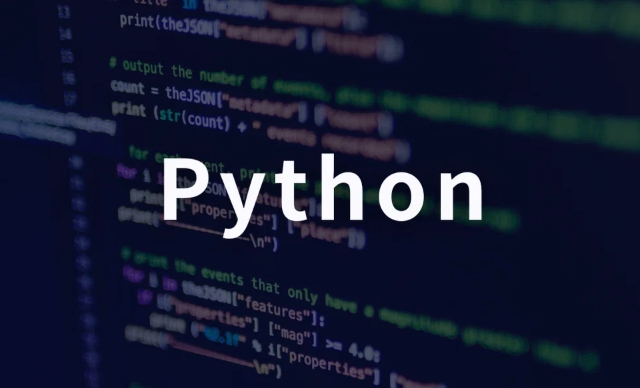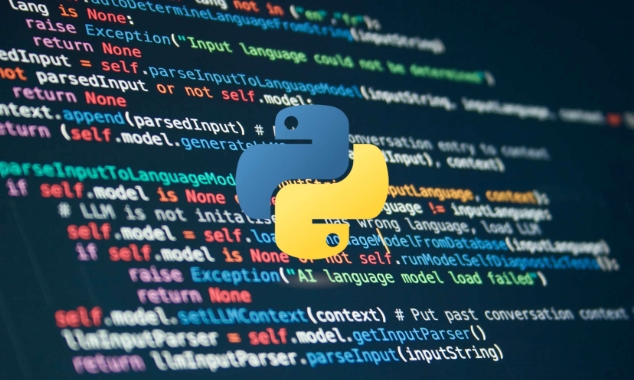To connect to MongoDB using Python, the most common way is to use the officially recommended driver library PyMongo. 1. First install PyMongo through pip install pymongo; 2. Use MongoClient to connect to local or remote MongoDB, and test the connection through ping command; 3. Select or create databases and collections; 4. Perform insert, query, update, and delete operations: Insert a single piece, use insert_one, and multiple pieces use insert_many; query use find_one or find, supporting conditional filtering; update use update_one or update_many, delete use delete_one or delete_many; 5. After the operation is completed, you can call client.close() to close the connection. In actual projects, it is recommended to use environment variables to manage sensitive information and consider using connection pools or asynchronous tools to improve performance. The entire process is complete and easy to implement and is suitable for most application scenarios.

The most common way to connect to MongoDB using Python is to use the officially recommended driver library PyMongo . Below is a complete and practical connection example, including basic operations such as installation, connection, addition, deletion, modification and search.

? 1. Install PyMongo
First make sure you have pymongo installed:
pip install pymongo
? 2. Connect to MongoDB (local or remote)
from pymongo import MongoClient
# Connect to local MongoDB (default address)
client = MongoClient('mongodb://localhost:27017/')
# Or connect to remote MongoDB (for example, MongoDB Atlas)
# client = MongoClient("mongodb srv://username:password@cluster0.xxxxx.mongodb.net/")
# Test connection try:
client.admin.command('ping')
print("? Connected to MongoDB successfully!")
except Exception as e:
print("? Connection failed:", e)? Tip: The
pingcommand is used to test whether the connection is normal.
? 3. Select database and collection
# Specify the database (it will be automatically created if it does not exist) db = client['mydatabase'] # Specify a collection (similar to table) collection = db['users']
? 4. Basic operation examples
? Insert data (Insert)
user = {"name": "Alice", "age": 30, "email": "alice@example.com"}
result = collection.insert_one(user)
print("? Inserted successfully, ID:", result.inserted_id)Insert multiple lines:
users = [
{"name": "Bob", "age": 25, "email": "bob@example.com"},
{"name": "Charlie", "age": 35, "email": "charlie@example.com"}
]
result = collection.insert_many(users)
print("? Insert multiple lines, IDs:", result.inserted_ids)? Query data (Find)
Query one:

user = collection.find_one({"name": "Alice"})
print("? query user:", user)Query all:
all_users = collection.find()
print("? All users:")
for user in all_users:
print(user)Query with conditional:
young_users = collection.find({"age": {"$lt": 30}})
print("? Users under 30:")
for user in young_users:
print(user)? Update data (Update)
Update one:
collection.update_one(
{"name": "Alice"},
{"$set": {"age": 31}}
)
print("? Alice's age updated")Updated multiple items:
collection.update_many(
{"name": {"$regex": "B"}},
{"$inc": {"age": 1}} # Age 1
)? Delete data (Delete)
Delete one:
collection.delete_one({"name": "Charlie"})
print("?? Charlie")Delete all matching:
collection.delete_many({"age": {"$gt": 50}})? 5. Close the connection (optional)
client.close()
print("? Connection closed")?? It is usually called when the script ends or the application exits, and short scripts can be omitted.
? Tips
- MongoDB's databases and collections are created lazy and are only truly generated when data is written.
- Use
os.environto manage remote connections with username and password is more secure. - It is recommended to use connection pooling (PyMongo default supports) to deal with high concurrency scenarios.
Basically that's it. A simple connection to CRUD is done. In actual projects you can encapsulate them into classes or use ORM tools such as Motor (asynchronous) or MongoEngine .
The above is the detailed content of python connect to mongodb pymongo example. For more information, please follow other related articles on the PHP Chinese website!

Hot AI Tools

Undress AI Tool
Undress images for free

Undresser.AI Undress
AI-powered app for creating realistic nude photos

AI Clothes Remover
Online AI tool for removing clothes from photos.

Clothoff.io
AI clothes remover

Video Face Swap
Swap faces in any video effortlessly with our completely free AI face swap tool!

Hot Article

Hot Tools

Notepad++7.3.1
Easy-to-use and free code editor

SublimeText3 Chinese version
Chinese version, very easy to use

Zend Studio 13.0.1
Powerful PHP integrated development environment

Dreamweaver CS6
Visual web development tools

SublimeText3 Mac version
God-level code editing software (SublimeText3)
 Polymorphism in python classes
Jul 05, 2025 am 02:58 AM
Polymorphism in python classes
Jul 05, 2025 am 02:58 AM
Polymorphism is a core concept in Python object-oriented programming, referring to "one interface, multiple implementations", allowing for unified processing of different types of objects. 1. Polymorphism is implemented through method rewriting. Subclasses can redefine parent class methods. For example, the spoke() method of Animal class has different implementations in Dog and Cat subclasses. 2. The practical uses of polymorphism include simplifying the code structure and enhancing scalability, such as calling the draw() method uniformly in the graphical drawing program, or handling the common behavior of different characters in game development. 3. Python implementation polymorphism needs to satisfy: the parent class defines a method, and the child class overrides the method, but does not require inheritance of the same parent class. As long as the object implements the same method, this is called the "duck type". 4. Things to note include the maintenance
 Explain Python generators and iterators.
Jul 05, 2025 am 02:55 AM
Explain Python generators and iterators.
Jul 05, 2025 am 02:55 AM
Iterators are objects that implement __iter__() and __next__() methods. The generator is a simplified version of iterators, which automatically implement these methods through the yield keyword. 1. The iterator returns an element every time he calls next() and throws a StopIteration exception when there are no more elements. 2. The generator uses function definition to generate data on demand, saving memory and supporting infinite sequences. 3. Use iterators when processing existing sets, use a generator when dynamically generating big data or lazy evaluation, such as loading line by line when reading large files. Note: Iterable objects such as lists are not iterators. They need to be recreated after the iterator reaches its end, and the generator can only traverse it once.
 How to handle API authentication in Python
Jul 13, 2025 am 02:22 AM
How to handle API authentication in Python
Jul 13, 2025 am 02:22 AM
The key to dealing with API authentication is to understand and use the authentication method correctly. 1. APIKey is the simplest authentication method, usually placed in the request header or URL parameters; 2. BasicAuth uses username and password for Base64 encoding transmission, which is suitable for internal systems; 3. OAuth2 needs to obtain the token first through client_id and client_secret, and then bring the BearerToken in the request header; 4. In order to deal with the token expiration, the token management class can be encapsulated and automatically refreshed the token; in short, selecting the appropriate method according to the document and safely storing the key information is the key.
 Explain Python assertions.
Jul 07, 2025 am 12:14 AM
Explain Python assertions.
Jul 07, 2025 am 12:14 AM
Assert is an assertion tool used in Python for debugging, and throws an AssertionError when the condition is not met. Its syntax is assert condition plus optional error information, which is suitable for internal logic verification such as parameter checking, status confirmation, etc., but cannot be used for security or user input checking, and should be used in conjunction with clear prompt information. It is only available for auxiliary debugging in the development stage rather than substituting exception handling.
 How to iterate over two lists at once Python
Jul 09, 2025 am 01:13 AM
How to iterate over two lists at once Python
Jul 09, 2025 am 01:13 AM
A common method to traverse two lists simultaneously in Python is to use the zip() function, which will pair multiple lists in order and be the shortest; if the list length is inconsistent, you can use itertools.zip_longest() to be the longest and fill in the missing values; combined with enumerate(), you can get the index at the same time. 1.zip() is concise and practical, suitable for paired data iteration; 2.zip_longest() can fill in the default value when dealing with inconsistent lengths; 3.enumerate(zip()) can obtain indexes during traversal, meeting the needs of a variety of complex scenarios.
 What are python iterators?
Jul 08, 2025 am 02:56 AM
What are python iterators?
Jul 08, 2025 am 02:56 AM
InPython,iteratorsareobjectsthatallowloopingthroughcollectionsbyimplementing__iter__()and__next__().1)Iteratorsworkviatheiteratorprotocol,using__iter__()toreturntheiteratorand__next__()toretrievethenextitemuntilStopIterationisraised.2)Aniterable(like
 What are Python type hints?
Jul 07, 2025 am 02:55 AM
What are Python type hints?
Jul 07, 2025 am 02:55 AM
TypehintsinPythonsolvetheproblemofambiguityandpotentialbugsindynamicallytypedcodebyallowingdeveloperstospecifyexpectedtypes.Theyenhancereadability,enableearlybugdetection,andimprovetoolingsupport.Typehintsareaddedusingacolon(:)forvariablesandparamete
 Python FastAPI tutorial
Jul 12, 2025 am 02:42 AM
Python FastAPI tutorial
Jul 12, 2025 am 02:42 AM
To create modern and efficient APIs using Python, FastAPI is recommended; it is based on standard Python type prompts and can automatically generate documents, with excellent performance. After installing FastAPI and ASGI server uvicorn, you can write interface code. By defining routes, writing processing functions, and returning data, APIs can be quickly built. FastAPI supports a variety of HTTP methods and provides automatically generated SwaggerUI and ReDoc documentation systems. URL parameters can be captured through path definition, while query parameters can be implemented by setting default values ??for function parameters. The rational use of Pydantic models can help improve development efficiency and accuracy.







